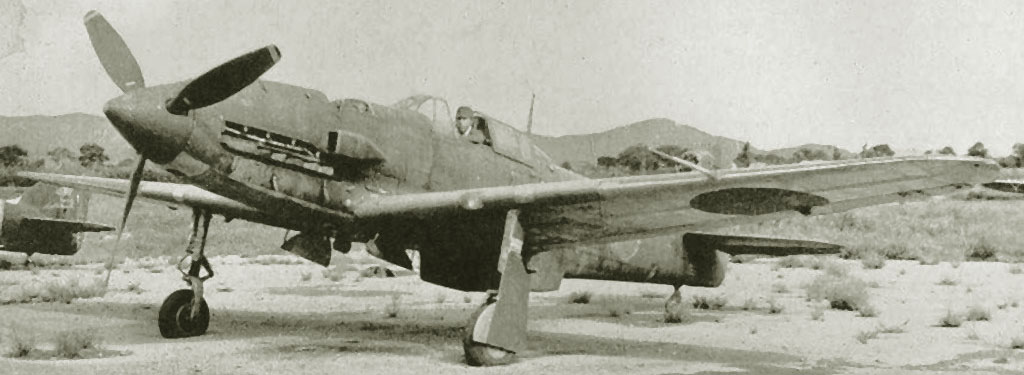
Aviation of World War II


 |
Aviation of World War II |


|
|
Soviet Union | Lend - Lease | Facts | Forum | Germany | Japan | R A F | U S A A F | Other | Photos | ||
|
| ||
Ki-61 "Hien"
The first prototype Ki-61 was manufactured in December 1941 and successfully passed flight tests, showing good maneuverability and controllability in the air. True, in comparison with the Ki-43, the fighter had a rather high specific wing loading (146 kg/m²), but this shortcoming was fully compensated for by powerful weapons, protected gas tanks and armored vehicle protection. The maximum speed of the Ki-61 at an altitude of 6,000 m was 591 km/h. To conduct military tests, the Kawasaki company built 11 more prototypes, but even before their completion, an order was received for the serial production of the fighter. The Ki-61 entered service with the Japanese army at the end of 1942 and, in accordance with the Japanese designation system, received the name "Type 3 Model I Army Fighter", as well as the name "Hien" (Swallow). By the end of the year, the plant in Kagamihara had produced 34 serial fighters in two versions: Ki-61-la (armed with two 12.7-mm synchronous fuselage machine guns No-103 and two wing 7.7-mm machine guns "type 89") and Ki- 61-Ib (four 12.7 mm No-103 machine guns in the wing and fuselage). The Ki-61-I fighter began to enter service in February 1943; in total, about 1380 aircraft were manufactured in two versions, differing in their weapons. After that, another 1274 Ki-61 KAI fighters appeared with an elongated fuselage and various weapon combinations. Further developments led to the creation of the Ki-61-II KAI high-altitude fighter, with the Na-140 engine. The new Hien turned out to be the only Japanese fighter capable of effectively operating at high altitude against the B-29 Superfortresses, but the low reliability of the engine reduced its combat value to a minimum. A total of 374 such aircraft were built, again in two versions with different weapons, but only 99 of them were equipped with the Na-140 engine. Like the rest of the Japanese fighters, the Hien was soon unable to withstand its American opponents. 
|
|
|